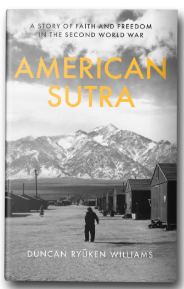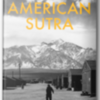In American Sutra, Williams, a professor of religion and East Asian languages and cultures at the University of Southern California, offers an account that is remarkable on several fronts. First, it is rich in ethnographic and historiographic detail. And although based primarily on historical records—including publications, official documents, correspondence, and journal entries—many of the cited sources provide first-person accounts, lending an approachable, human tone to the work. Much of the richness of the narrative derives from Williams’ painstaking effort over many years to collect, sift, and compile his research into a complex yet eminently accessible form.
When the 442nd—an all-Japanese American regiment, and the most decorated unit in the Second World War—was recruited from among internees and deployed to the European theater, all assigned chaplains were Christian, even though the vast majority of soldiers were Buddhist. Field burials were conducted using Christian rites, without exception, and resting places were marked with a cross. When internees were released from the camps, Buddhists were often not allowed to return to their temples, or even gather for religious services, violating their right to freedom of religion. This was a very different outcome from that of their Christian counterparts, who often received significant aid from Christian ministers and churches.
The internment experience of Japanese American Buddhists, which included a requirement to take an oath of loyalty to the US even when they were not allowed to become US citizens, is the story of our nation’s history. From the genocide of Native Americans to the slavery of African Americans, the importation of Japanese Americans and other Asian Americans as cheap labor, and the projection of the dominant culture’s own darkness onto racially stereotyped Muslims, to the current predicament of Latinx migrants who are suffering unspeakable treatment even as their labor remains indispensable to the operation of the American economy, the white Euro-American dominion over the planet has required the subjugation of colored bodies as the bridges to the earth. To begin to end the cycle of violence perpetrated on other peoples and on the earth itself requires one to stand before the cycle of karmic violence in recognition and to stop it with one’s own body in the present moment of awareness, here and now, as Richard Sakakida did in facing his Japanese captors as well as white America’s racism and religious prejudice—absorbing, digesting, reflecting, and overturning the cycle of violence into the unfolding of unconditional compassion. As the story of the Buddha shows, true Buddhist awakening must be borne witness by the body of the earth herself.
To read more of Mark Unno's article, please click here.



Comments (0)